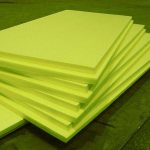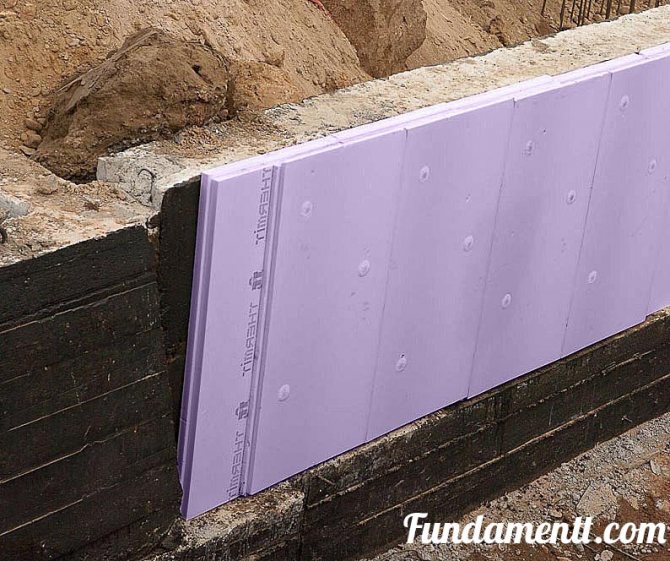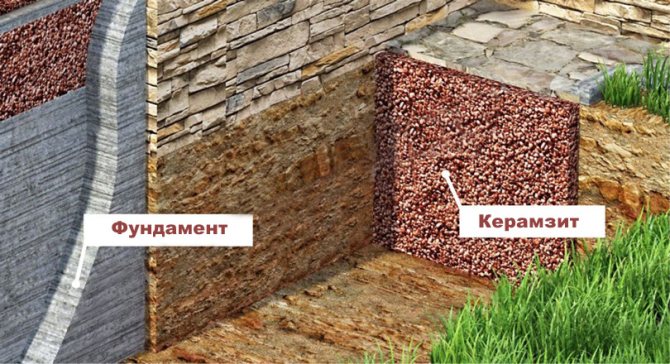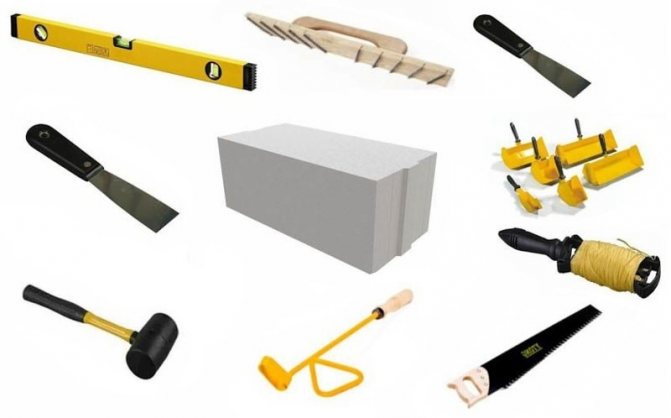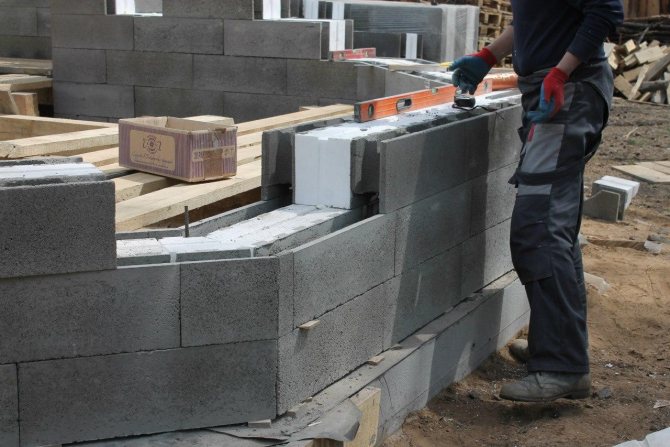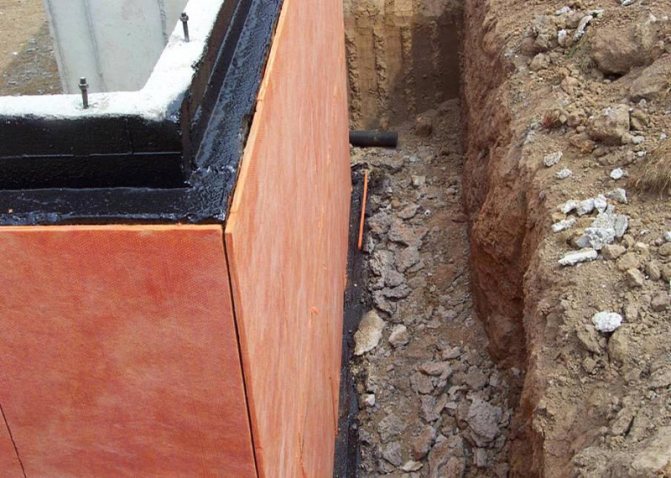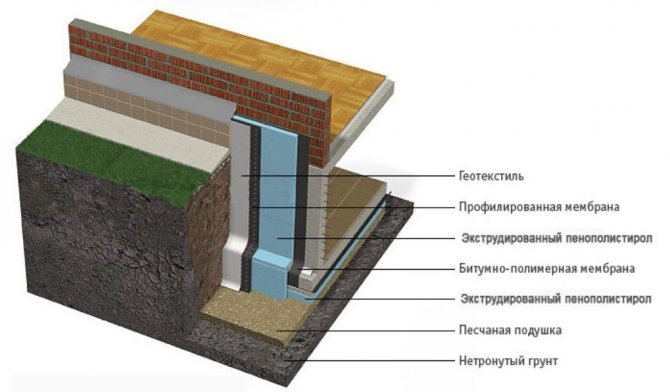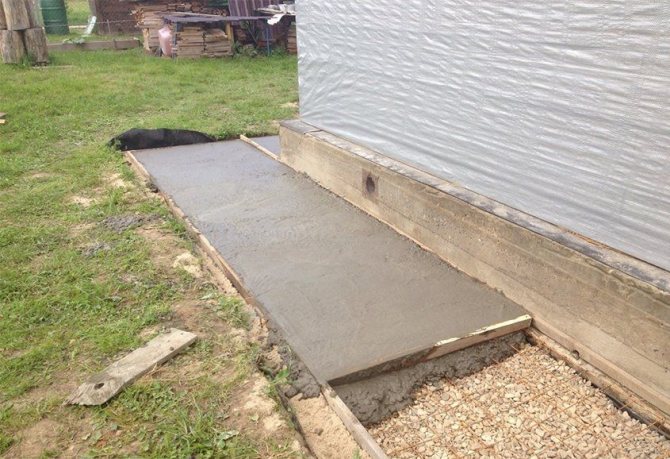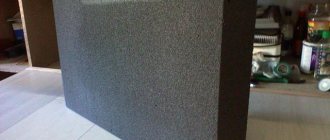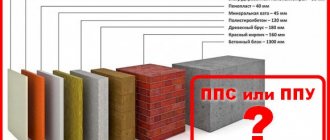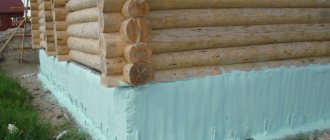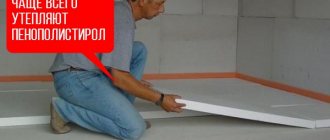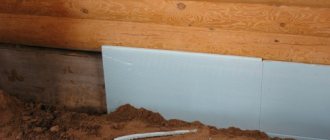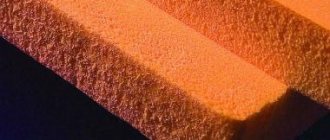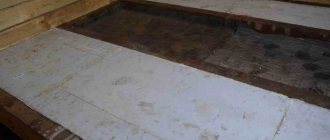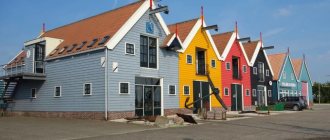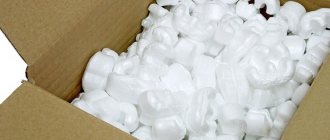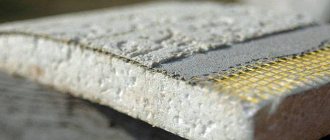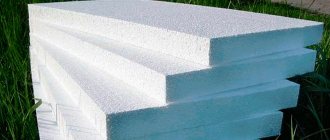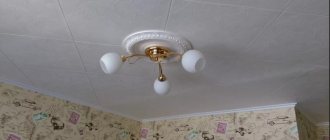The change of seasons and climate change makes us think about how important it is to have good thermal insulation in your home. In this case, special attention should be paid to the insulation of the foundation of buildings, since the materials used in their construction have a high degree of thermal conductivity. A well-insulated base of the house will not freeze through, which means that the cold will not penetrate into the room.
Sometimes the insulation of the foundation must be started from the very foundation, so such work should be planned at the very beginning of construction. Any insulation material, as a rule, is laid or fixed during waterproofing work. Such work does not require special skills, which means that you can insulate the foundation yourself.
What you need to know about basement insulation
Quite often, the question is asked about the need to insulate the foundation. This is due to the fact that very few people know what it is for, especially if they will not be living in the house all year round. In addition to the fact that the insulated foundation allows you to save money on heating the premises in the winter, the insulation of the foundation makes it possible to:
- Make your stay in the house as comfortable as possible regardless of the season. This is achieved by the fact that the room will not be damp.
- Insulation of the foundation allows you to protect it from the harmful effects of weather conditions. For example, from swelling and freezing of the soil around it, which prevents the subsequent destruction of the foundation.
- If there is a basement in the house, the insulated foundation allows you to achieve comfortable conditions in it, which will make it possible to use the basement for various purposes, up to the arrangement of any rooms in it.
In addition to the fact that insulation allows you to achieve the listed goals, it is very important to know what properties the thermal insulation should have. Among them:
- The material must have low thermal conductivity.
- The material should not allow moisture to pass through itself, that is, it should be waterproof. If the insulation absorbs a large amount of water, then its properties will only deteriorate, and in winter, the accumulated moisture can deform it in the process of turning into ice.
- The material must be strong enough, otherwise it can deform under the influence of various forces from the soil.
All of these properties are possessed by expanded polystyrene, therefore, we will consider the insulation of the foundation with its help.
Do I need to insulate the strip foundation in the house
Concrete and reinforcement used for pouring the foundations of baths, garages and houses have a high thermal conductivity. The concrete foundation of the house conducts the cold well from the street in frosty weather. It is especially important to correctly insulate a shallow foundation with your own hands, since a shallow foundation has a shallower depth than the freezing soil layer in winter and can collapse when the soil heaves.
Photo. Insulation of the foundation with penoplex
Insulating the blind area of the house and the foundation around the perimeter, as well as insulating the roof with mineral wool from the inside, is a mandatory requirement for comfortable living in a house in the harsh climate of Russia. The device of a foundation with a shallow depth is possible only if the technology of insulation and blind area of the house is observed. And there are three main reasons for the need for external and internal insulation of the strip foundation:
1... when building a country house on a site with heaving soil, the insulated blind area and foundation reduces the depth of soil freezing at the base of the house;
2... an insulated foundation reduces heat loss in the room and the owners' expenses for heating a private house throughout the entire heating period;
3... insulation prevents the formation of condensation in the basement, improves the microclimate in the house.
Advantages and disadvantages of expanded polystyrene

This type of material, oddly enough, has a number of advantages and disadvantages that you should definitely talk about. So among the advantages of the material are:
- High thermal insulation characteristics.
- The material is quite frost-resistant, which indicates its possible use in regions with a harsh climate.
- The material does not allow steam to pass through, which indicates low vapor permeability.
- Installation of expanded polystyrene is carried out without much effort, it is easy to fix and adjust to the required size.
- The surface of the foundation on which the material will be fixed does not require special preparation, therefore even slight irregularities are allowed.
- The cost of expanded polystyrene is not high, which allows it to be used by all segments of the population.
In addition to the listed advantages, it is also worth paying attention to its disadvantages, including:
- Insufficient resistance to fire, that is, it is quite easily flammable, therefore, on top of it, the basement should be finished only with non-combustible materials.
- The material is not resistant to damage from rodents, therefore, additional installation of a reinforcing mesh is recommended.
- Depending on the type, the material is capable of absorbing moisture, therefore it is recommended to use additional waterproofing.
- When filling the material with soil with solid particles, the material can be easily damaged, therefore it is recommended to install additional protection against mechanical damage.
Types of expanded polystyrene
In modern market conditions, this material can be of different varieties. So there are two types of polystyrene foam: it is foamed and extruded polystyrene foam. Let's consider each one separately.
Extruded polystyrene foam
This material is designated in the market by the letters XPS. It has better characteristics than foamed, and therefore is often used to insulate the foundation itself. So its advantages include:
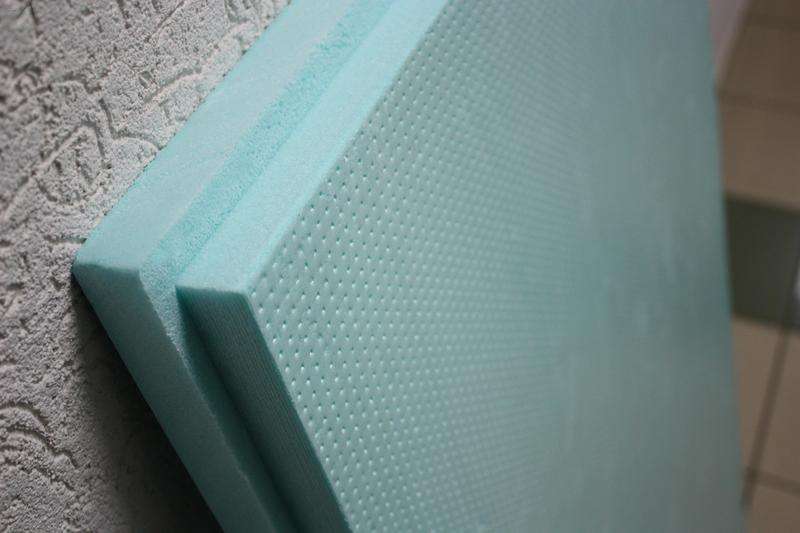

- High thermal insulation capacity.
- High compressive strength of the material.
- The material has a homogeneous porous structure, its pores are closed, which provides good protection against moisture, that is, such material does not absorb moisture, and accordingly does not freeze in winter.
- The durability of such a material, according to the applications of its manufacturers, is about 50 years.
Expanded polystyrene foam
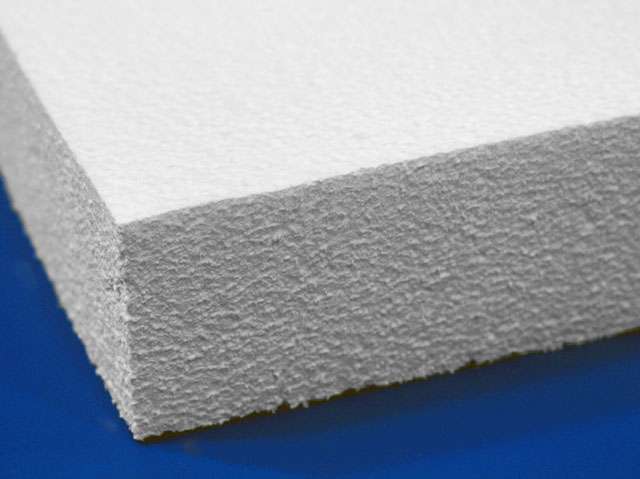

This type of material on the market is denoted by the letters EPS, and is popularly called ordinary foam. It is also often used to insulate various surfaces due to its low thermal conductivity, however, it has significant differences over extruded polystyrene foam:
- Polyfoam has the ability to absorb water, which reduces its heat retention rates. If you do not make additional waterproofing insulation, then in winter it can freeze, which will lead to its deformation and the formation of cold bridges.
- The compressive strength of such a material is much lower than that of extruded material, therefore, it becomes necessary to provide additional protection, for example, arrangement around the foundation of additional brickwork or covering the insulation with profiled membranes.
Foundation insulation technology
The technology of insulating the walls of the foundation with expanded polystyrene is not too complicated, but it can still be divided into several stages.
- preparatory work
The first step is to prepare the foundation for subsequent insulation. For this you need:
- Dig out the foundation around the entire perimeter, that is, make a trench around it about 1 m wide and with a depth that corresponds to the depth of the foundation.
- Further, the surface of the foundation is cleaned of all dirt and earth, substandard concrete, and, if necessary, level the surface with cement mortar so that there are no large protrusions and pits in it. If there was a need to make cosmetic repairs to the foundation, it must be allowed time to dry, after which you can proceed to the next stage.
- The thickness of the insulation should be about 10 cm, however, for a more accurate determination, it is necessary to carry out appropriate calculations, depending on weather conditions. As a rule, to achieve the required thickness of the insulation, polystyrene foam is laid in several layers.
- If the site has an elevated level of groundwater, or there is a well, it is necessary to make drainage. To do this, a layer of sand is placed on the bottom of the trench, on top of which a layer of geotextile is laid. Next, a layer of gravel and a perforated pipe filled with gravel are laid, which is additionally wrapped with geotextiles. A layer of sand is poured over the gravel and pipes. The pipe must be taken to a drainage well or to the nearest collector.
- Further, the surface of the foundation must be waterproofed using various materials. Self-adhesive insulation is most often used, which is well ironed with a roller.
Having done all the necessary manipulations, you can proceed to fixing the expanded polystyrene sheets.
- fastening of sheets
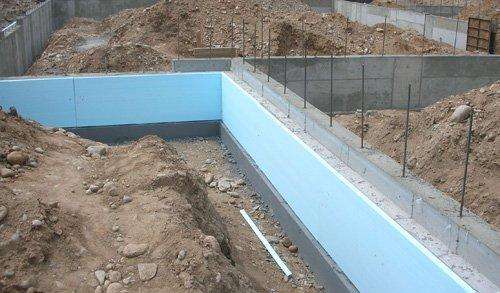

Fastening of expanded polystyrene sheets should be carried out according to the following rules:
- Sheets of material are fixed to the surface of the foundation using special adhesives, and it is highly discouraged to use organic solvents, dowels or hot fixing. This can damage both the thermal insulation and the waterproofing.
- It is necessary to apply the adhesive composition to the sheets of material pointwise, that is, in the corners and in several places in the center of the sheet. After applying the glue, the sheet must be well pressed against the foundation surface and held in this position for a while. As a rule, the instructions for the adhesive composition indicate the retention time of the board.
- It is recommended to start gluing the sheets, starting from any lower corner of the foundation, gradually passing along the base, and then moving to the next row in a checkerboard pattern.
- All gaps that arise between the plates of the material must be carefully foamed or filled with glue.
- When the first row of insulation is laid, it can be covered halfway with soil, which will simplify further work.
- The corners of the foundation must be insulated with an additional layer of slabs, since they are the weakest point.
- It is necessary to insulate the basement of the foundation in the same way as the rest of the, the only thing is that you can use special disc dowels to fix it. As a rule, 3-5 umbrellas will be enough to secure one plate.
- plastering and backfilling of the foundation
At the end of the work, the insulation must be completely plastered with glue for finishing work. In addition, to give greater strength, they additionally use a reinforcing mesh for external work, which is embedded in the applied plaster.
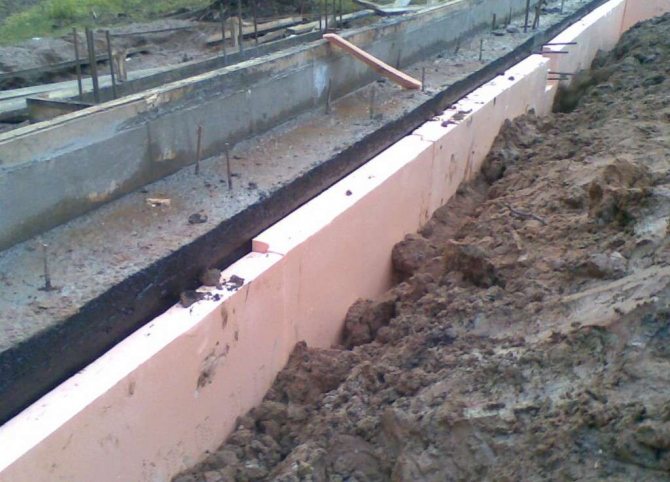

The part of the foundation, which is below the ground level, is poured back. It is also recommended to perform a blind area. This will give more protection to the foundation from the effects of climatic conditions.
In conclusion, I would like to say that observing fairly simple rules for warming the foundation, you can achieve high-quality thermal insulation of the foundation, which, in turn, will reduce the cost of heating the premises in the winter. In addition, expanded polystyrene is a durable, durable and affordable material that will significantly increase the service life of both the foundation and the house as a whole.Therefore, the question of how and why to insulate the foundation with expanded polystyrene is fully disclosed.
Inner or outer side of the foundation
When insulating the foundations of old houses, they often make the mistake of insulating it from the inside. Such insulation does not affect the thermal insulation of the foundation, leaving it uninsulated. At its core, this is the thermal insulation of basements, and the foundation is still exposed to negative environmental influences.
The base is insulated at the construction stage, but if it is necessary to insulate the foundation of an old house, then you will have to dig it out and clean it.
What does external insulation give:
- the foundation does not freeze, there is no influence of constant defrosting and freezing;
- EPPS is an additional barrier from groundwater;
- protection against heaving of soils, which prevents the formation of cracks in the foundation;
- a constant microclimate is created in the basement.
For old houses, you need to dig out the entire foundation for insulation.
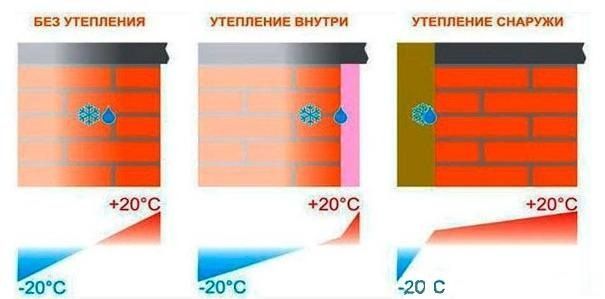

Schemes of different types of insulation

